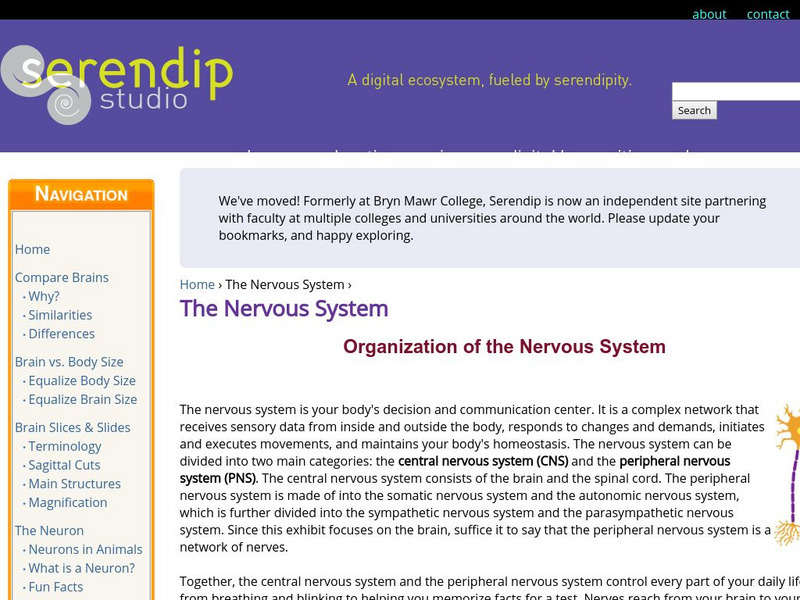PBS
Pbs Teachers: Scientific American: Make Up Your Mind: Mind Mapping
Investigate the pseudoscience of phrenology and its attempt to organize and assign different purposes to different parts of the brain. Create a phrenology chart on a bathing cap and compare it to modern understanding of brain function...
Other
Newsbreak Special Health Report on the Brain and Aging
This article discusses the relationship between memory and the aging of the brain.
Other
Posit Science: The Brain 101
Learn about the structure of the human brain with this interactive diagram. Also, find out about neurons, message transmission, and other factors that affect brain function.
Other
University of Nebraska at Omaha: Brains Rule! Games: Ecstasy Invaders
Go on a mission inside a nerve cell to find out about how neurons produce and release neurotransmitters to communicate with other neurons. Learn what happens to these brain chemicals when the drug ecstasy interrupts the process.
Bryn Mawr College
Serendip: The Nervous System
Learn about the main sections of the human brain, and how the structure or each relates to its function.
PBS
Pbs Learning Media: The Adolescent Brain
In this transcript from FRONTLINE: "Inside the Teenage Brain," neuroscientist Dr. Jay Giedd discusses new research on brain development in teenagers.
Other
Brain Line: Brain Basics
Three roll-over diagrams of the brain highlight its parts. In accompanying display panes, learn about the functions that each highlighted part is responsible for and about problems that can occur if that part of the brain is damaged.
PBS
Pbs Teachers: Mystery of the Senses Vision
Understand how our brain identifies an object, view six optical illusions and explain why the visual system might interpret them the way it does.
NBC
Live Science: Your Brain Remembers What You Forget
The brain functions in ways that many researchers often fail to understand. This particular article reveals recent discoveries regarding research conducted on memory. An interactive feature is also posted on this site. Information is...




